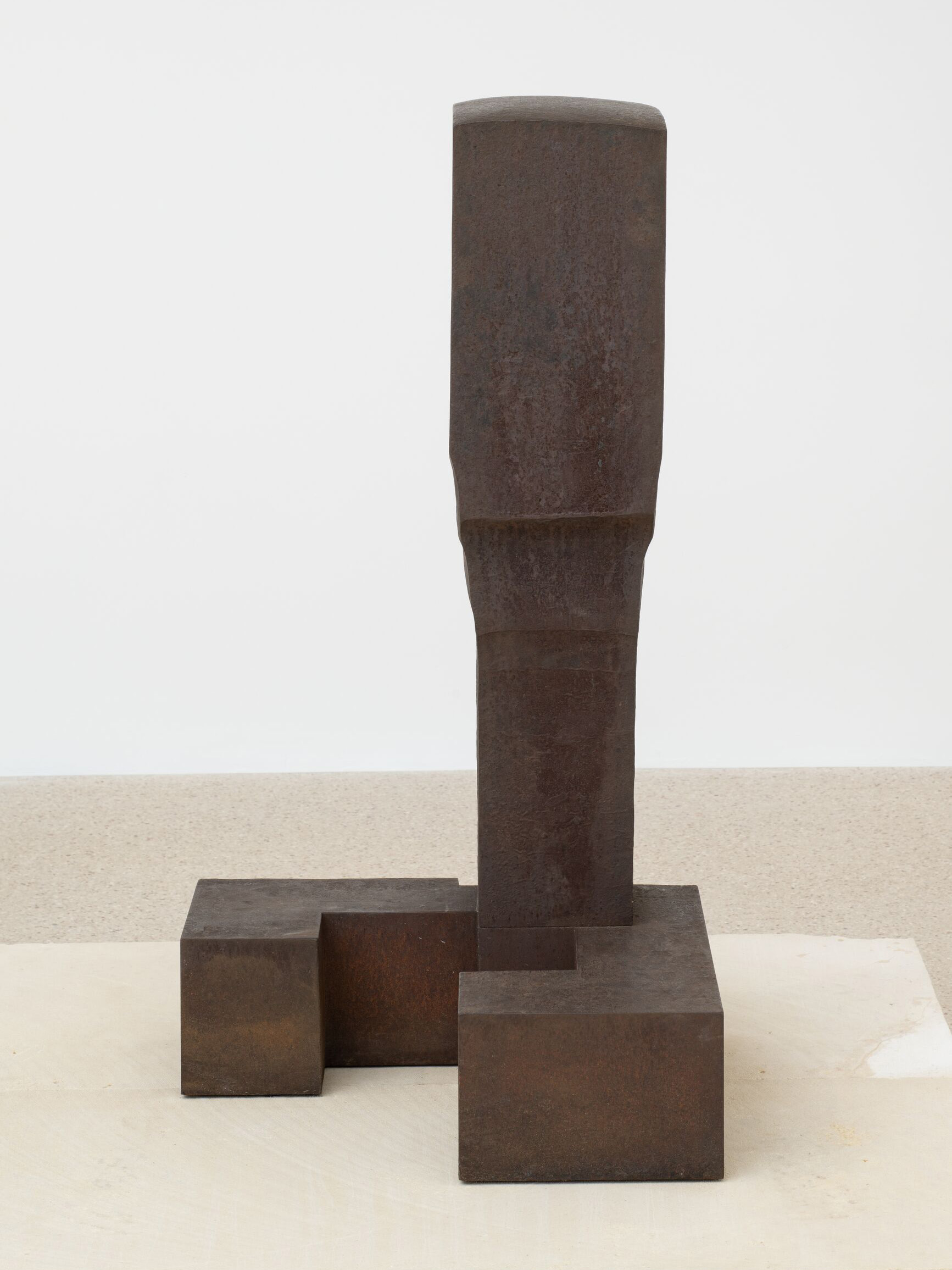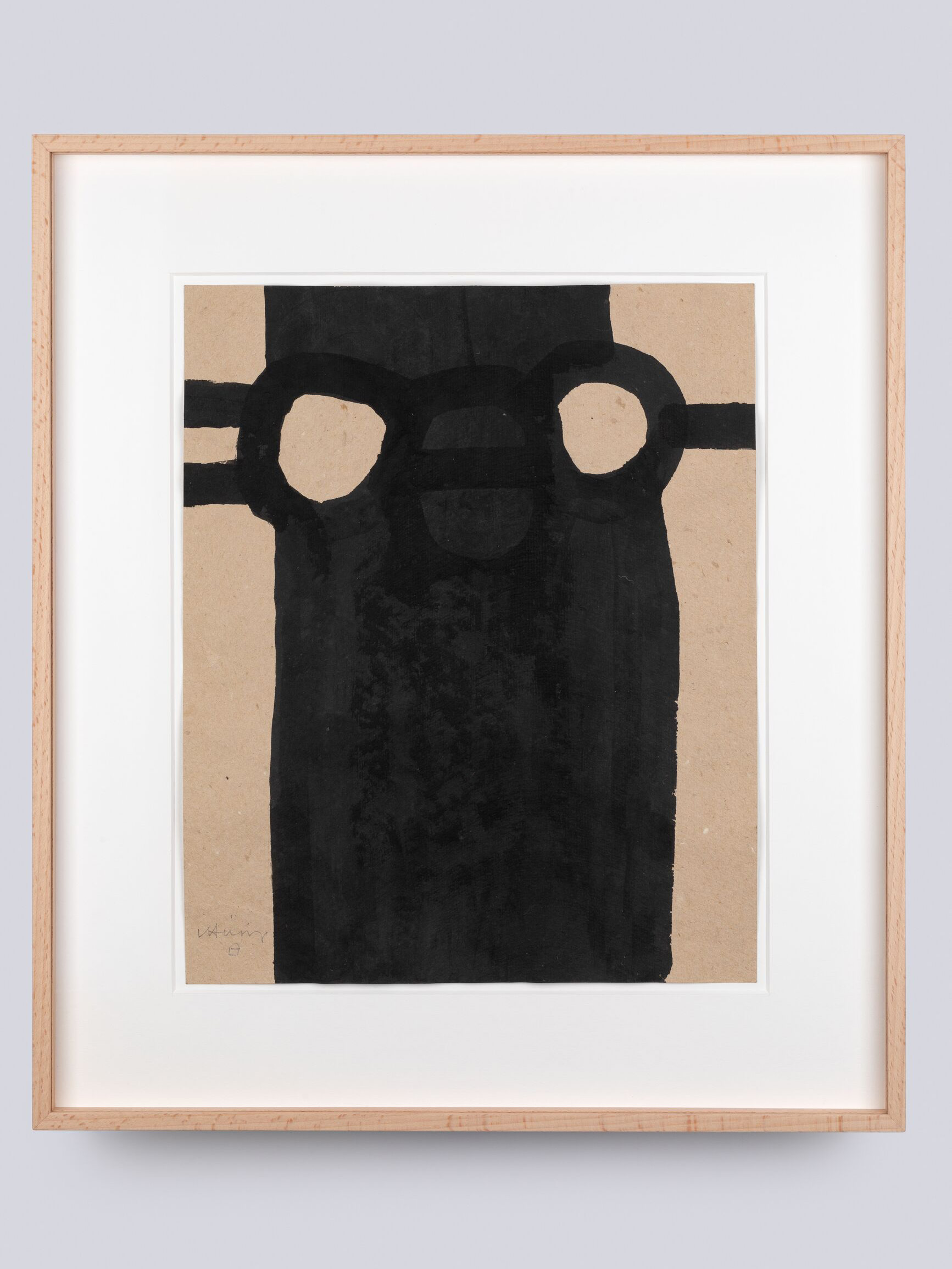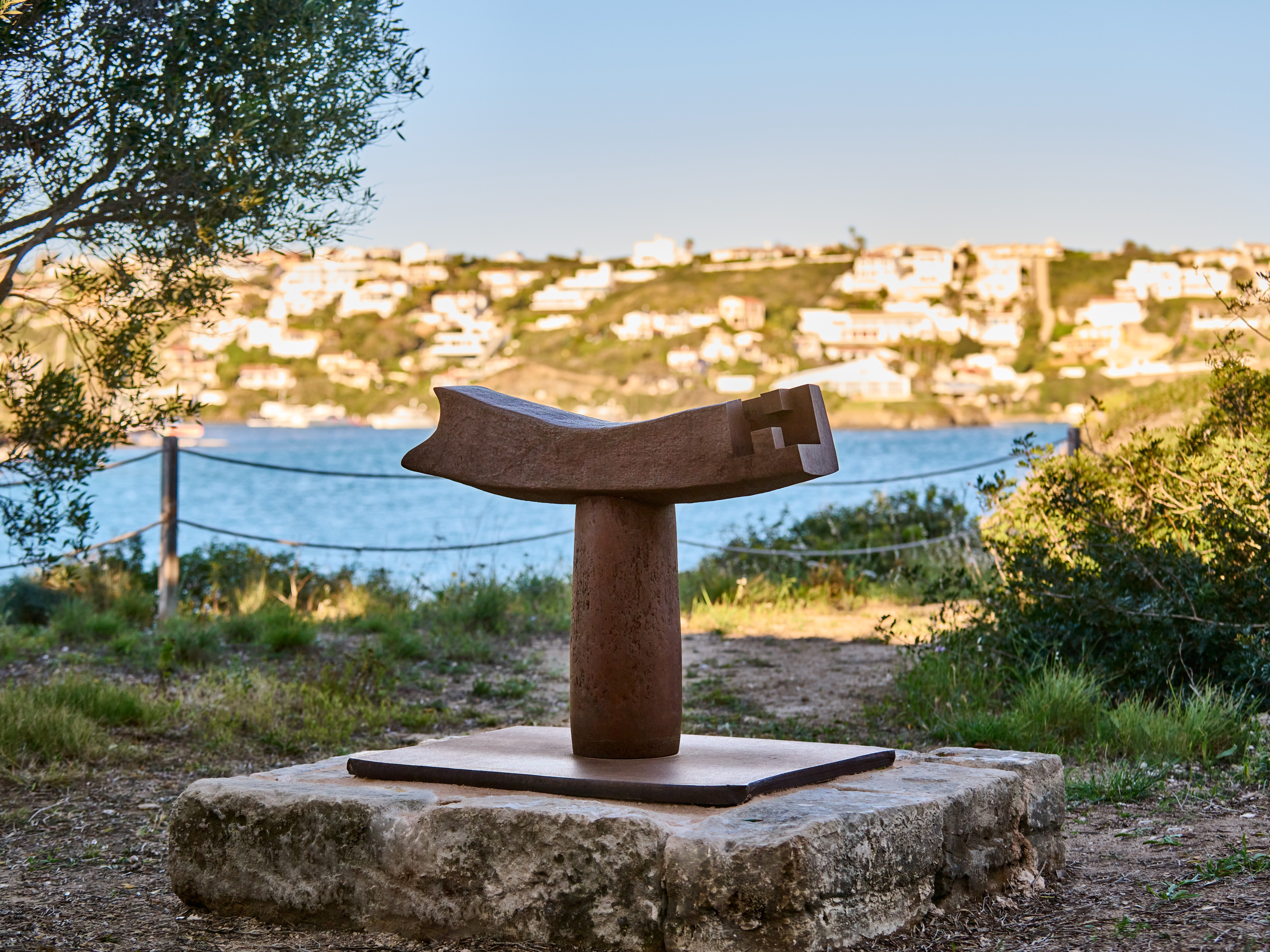Works by Eduardo Chillida Return to Menorca This Spring

Installation view, ‘Chillida in Menorca’ at Hauser & Wirth Menorca, 2024 © Zabalaga Leku. San Sebastián, VEGAP, 2025. Photo: Damian Griffiths
Works by Eduardo Chillida Return to Menorca This Spring
The dedicated showcase highlights the artist’s profound connection with the island and its natural environment, as well as local materials he was able to work with during time spent in Menorca. The presentation includes early works on paper from the 1970s, Chamotte clay sculptures made during the 1980s and later work in Corten steel. ‘Saludo a los Pájaros II (Salute to the Birds II)’ (2000) is visible beyond the gallery window, surrounded by trees and views of the harbour. Appearing almost weightless, the sculpture denotes Chillida’s mastery of material and form as well as his continuous passion for natural phenomena.

Eduardo Chillida working in his Menorca studio © Zabalaga Leku. San Sebastián, VEGAP, 2025. Photo: Hans Spinner
Eduardo Chillida (1924 – 2002) is one of the preeminent Spanish sculptors of the 20th century, whose varied and pioneering practice reinterpreted the dialectic of solid and void, positive and negative and interior and exterior space. Chillida’s connection with Menorca formed during the many summers he spent on the island from 1989. Setting up an outdoor studio at ‘Quatre Vents’, the family house he created with his wife Pilar Belzunce in Alcaufar, he found a quiet place to work on chamotte clay sculptures, surrounded by the fields and their drystone walls.
In Menorca, Chillida drew inspiration from the white light of the Mediterranean that was a perfect contrast to the ‘black light’ of his native Basque Country, as he described it. He held an enduring admiration for the light, the open-air quarries of local ‘marès’ stone and the monuments from the Talayotic period, including T-shaped ‘taules’ (‘tables’ in Catalan) which inspired some of his works and have been recognised as a World Heritage Site by UNESCO in 2023. He commented: ‘The light in Menorca is magnificent. The island has a beautiful history, there is a very interesting stone culture, and it’s so full of wind. So, I have heard it said: Menorca, wind and stones.’

Installation view, ‘Chillida in Menorca’ at Hauser & Wirth Menorca, 2024 © Zabalaga Leku. San Sebastián, VEGAP, 2025. Photo: Damian Griffiths

Eduardo Chillida, Sin título (Untitled), 1997 © Zabalaga Leku. San Sebastián, VEGAP, 2025. Photo: Alex Abril
Throughout the presentation, a selection of works are presented on plinths made from ‘marès,’ the local stone used to build the 18th century building housing the gallery. The presentation concept has been developed by architect Luis Laplace, who led the restoration of Hauser & Wirth Menorca and the reconditioning at Chillida Leku – the museum created by Eduardo Chillida in his lifetime – and places the artworks in dialogue with the surrounding landscape and the architecture of the space.

Installation view, ‘Chillida in Menorca’ at Hauser & Wirth Menorca, 2024 © Zabalaga Leku. San Sebastián, VEGAP, 2025. Photo: Daniel Schäfer
The presentation is in collaboration with the Estate of Eduardo Chillida and Museo Chillida Leku. ‘Harri, Lurra, Huts,’ runs at Museo Chillida Leku until 15 September, an exhibition of over 100 works that explores Chillida’s material universe from the perspective of earth and stone. Public programming and learning events will take place throughout the summer in both Menorca and Museo Chillida Leku.
Find additional learning resources to explore the presentation’s key themes and suggested topics for discussion here.
Related News
1 / 5




